Shaping the response: the role of FcεRI and Syk expression levels in mast cell signaling
- PMID: 21073233
- PMCID: PMC3057513
- DOI: 10.1049/iet-syb.2010.0006
Shaping the response: the role of FcεRI and Syk expression levels in mast cell signaling
Abstract
Many receptor systems initiate cell signaling through ligand-induced receptor aggregation. For bivalent ligands binding to mono- or bivalent receptors, a plot of the equilibrium concentration of receptors in aggregates against the log of the free ligand concentration, the cross-linking curve, is symmetric and bell shaped. However, steady state cellular responses initiated through receptor cross-linking may have a different dependence on ligand concentration than the aggregated receptors that initiate and maintain these responses. The authors illustrate by considering the activation of the protein kinase Syk that rapidly occurs after high affinity receptors for IgE, FcεRI, are aggregated on the surface of mast cells and basophils. Using a mathematical model of Syk activation the authors investigate two effects, one straightforward and one less so, that result in Syk activation not qualitatively following the cross-linking curve. Model predictions show that if the mechanism by which Syk is fully activated involves the transphosphorylation of Syk by Syk, then Syk activation curves can be either bell shaped or double humped, depending on the cellular concentrations of Syk and FcεRI. The model also predicts that the Syk activation curve can be non-symmetric with respect to the ligand concentration. The cell can exhibit differential Syk activation at two different ligand concentrations that produce identical distributions of receptor aggregates that form and dissociate at the same rates. The authors discuss how, even though it is only receptor aggregates that trigger responses, differences in total ligand concentration can lead to subtle kinetic effects that yield qualitative differences in the levels of Syk activation.
Figures

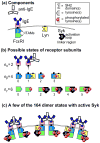
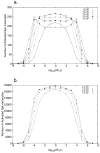
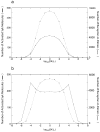
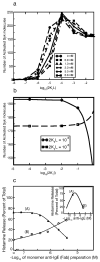
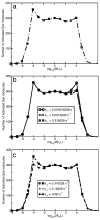
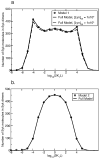
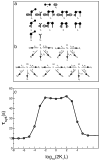
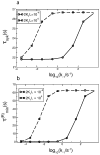
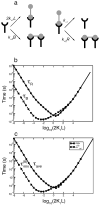
Similar articles
-
A detailed mathematical model predicts that serial engagement of IgE-Fc epsilon RI complexes can enhance Syk activation in mast cells.J Immunol. 2010 Sep 15;185(6):3268-76. doi: 10.4049/jimmunol.1000326. Epub 2010 Aug 23. J Immunol. 2010. PMID: 20733205 Free PMC article.
-
Antigen-induced reduction in mast cell and basophil functional responses due to reduced Syk protein levels.Int Arch Allergy Immunol. 2005 Sep;138(1):29-39. doi: 10.1159/000087355. Epub 2005 Aug 8. Int Arch Allergy Immunol. 2005. PMID: 16088210
-
Differential mast cell outcomes are sensitive to FcεRI-Syk binding kinetics.Mol Biol Cell. 2017 Nov 7;28(23):3397-3414. doi: 10.1091/mbc.E17-06-0350. Epub 2017 Aug 30. Mol Biol Cell. 2017. PMID: 28855374 Free PMC article.
-
Modeling the early signaling events mediated by FcepsilonRI.Mol Immunol. 2002 Sep;38(16-18):1213-9. doi: 10.1016/s0161-5890(02)00066-4. Mol Immunol. 2002. PMID: 12217386 Review.
-
Protein tyrosine kinase Syk in mast cell signaling.Mol Immunol. 2002 Sep;38(16-18):1229-33. doi: 10.1016/s0161-5890(02)00068-8. Mol Immunol. 2002. PMID: 12217388 Review.
Cited by
-
Rule-based modeling: a computational approach for studying biomolecular site dynamics in cell signaling systems.Wiley Interdiscip Rev Syst Biol Med. 2014 Jan-Feb;6(1):13-36. doi: 10.1002/wsbm.1245. Epub 2013 Sep 30. Wiley Interdiscip Rev Syst Biol Med. 2014. PMID: 24123887 Free PMC article. Review.
-
Scaffold-mediated nucleation of protein signaling complexes: elementary principles.Math Biosci. 2011 Aug;232(2):164-73. doi: 10.1016/j.mbs.2011.06.003. Epub 2011 Jun 12. Math Biosci. 2011. PMID: 21683720 Free PMC article.
-
Generalizing Gillespie's Direct Method to Enable Network-Free Simulations.Bull Math Biol. 2019 Aug;81(8):2822-2848. doi: 10.1007/s11538-018-0418-2. Epub 2018 Mar 28. Bull Math Biol. 2019. PMID: 29594824 Free PMC article.
-
An Interaction Library for the FcεRI Signaling Network.Front Immunol. 2014 Apr 15;5:172. doi: 10.3389/fimmu.2014.00172. eCollection 2014. Front Immunol. 2014. PMID: 24782869 Free PMC article. Review.
-
Omalizumab increases the intrinsic sensitivity of human basophils to IgE-mediated stimulation.J Allergy Clin Immunol. 2013 Oct;132(4):906-11.e1-4. doi: 10.1016/j.jaci.2013.04.056. Epub 2013 Jun 20. J Allergy Clin Immunol. 2013. PMID: 23791510 Free PMC article. Clinical Trial.
References
-
- Rivera J, Gilfillan AM. Molecular regulation of mast cell activation. J Allergy Clin Immunol. 2006;117:1214–1225. - PubMed
-
- MacGlashan D., Jr IgE and FcεRI regulation. Ann N Y Acad Sci. 2005;1050:73–88. - PubMed
-
- Blank U, Ra C, Miller L, White K, Metzger H, Kinet JP. Complete structure and expression in transfected cells of high affinity IgE receptor. Nature. 1989;337:187–189. - PubMed
-
- Faeder JR, Hlavacek WS, Reischl I, Blinov ML, Metzger H, Redondo A, et al. Investigation of Early Events in FcεRI-Mediated Signaling Using a Detailed Mathematical Model. J Immunol. 2003;170:3769–3781. - PubMed
-
- Kambayashi T, Koretzky GA. Proximal signaling events in FcεRI-mediated mast cell activation. J Allergy Clin Immunol. 2007;119:544–552. - PubMed
Publication types
MeSH terms
Substances
Grants and funding
LinkOut - more resources
Full Text Sources
Miscellaneous

